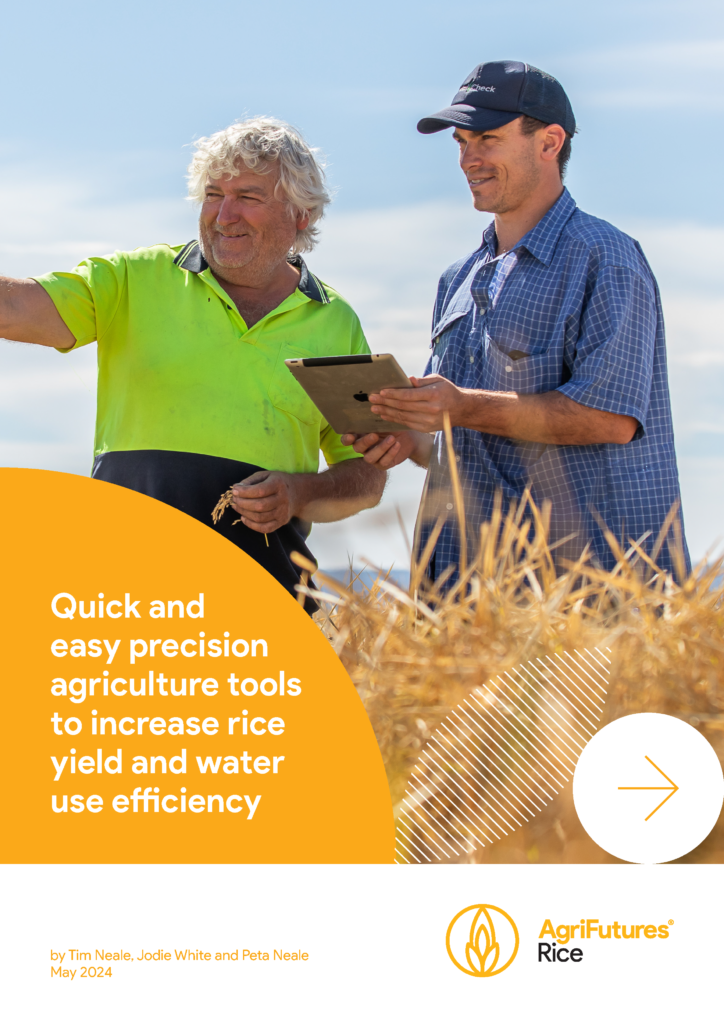Rice Extension Annual Summary CY25
This report acts as a detailed snapshot of the season, guidebook for rice growers, a reference guide for researchers and an educational resource for other...
 RICE
RICE 
48 pages
Published: 23 Oct 2024
Author(s): Tim Neale, Jodie White, Peta Neale
ISBN: 978-1-76053-527-8
Download report PDF
DownloadPurchase a hard copy - AUD $50
The Australian rice industry is a world leader in the efficient use of water and achieving high yields. This status has been achieved through a long history of investment in research, development and extension. However, as new challenges emerge amid a changing production environment, the pursuit of efficiency and productivity remains paramount.
This report, prepared by the DataFarming team following extensive research over three seasons, represents a significant stride towards the widespread use of digital technologies and data to improve decision making and efficiency in the industry. Rice growers face several agronomy challenges: in-field variability; lodging and other crop anomalies; understanding optimum nutrient application rates; and detecting key decision timings, such as crop maturity and when to drain the field. Technology can help overcome these challenges, but must be fit for purpose.
The project team applied mapping and remote sensing technologies to rice production to develop tools that enable quick and easy decision making in the field. Through collaborating with agronomists, growers, the NSW Department of Primary Industries, harvest contractors, SunRice and technology suppliers, they produced four easy-to-use, effective and semi-automated precision agriculture tools. The project has laid the groundwork for growers to more easily detect soil constraints, create variable rate application maps for nitrogen and soil amelioration, detect early anomalies, and time harvest.
There is, however, a critical need to refine the tools, and to train and support growers in their use to drive adoption. As confidence grows, we anticipate industry-wide demand for these tools and greater interest in precision agriculture. Going forward, AgriFutures Australia will continue to support further development, extension and adoption of these innovations.